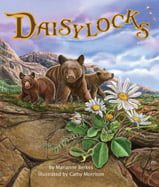Alignment to Standards for FL

| Grade | Number | Standard |
|---|---|---|
| 1 | SC.1.E.6.1 | Recognize that water, rocks, soil, and living organisms are found on Earths surface. |
| 1 | SC.1.E.6.2 | Describe the need for water and how to be safe around water. |
| 1 | SC.1.L.14.2 | Identify the major parts of plants, including stem, roots, leaves, and flowers. |
| 1 | SC.1.L.17.1 | Through observation, recognize that all plants and animals, including humans, need the basic necessities of air, water, food, and space. |
| 2 | SC.2.E.6.1 | Recognize that Earth is made up of rocks. Rocks come in many sizes and shapes. |
| 2 | SC.2.E.6.2 | Describe how small pieces of rock and dead plant and animal parts can be the basis of soil and explain the process by which soil is formed. |
| 2 | SC.2.E.6.3 | Classify soil types based on color, texture (size of particles), the ability to retain water, and the ability to support the growth of plants. |
| 2 | SC.2.L.17.1 | Compare and contrast the basic needs that all living things, including humans, have for survival. |
| 2 | SC.2.L.17.2 | living things are found all over Earth, but each is only able to live in habitats that meet its basic needs. |
| 2 | SC.2.P.8.2 | Identify objects and materials as solid, liquid, or gas. |
| 2 | SC.2.P.8.3 | Recognize that solids have a definite shape and that liquids and gases take the shape of their container. |
| 2 | SC.2.P.8.4 | Observe and describe water in its solid, liquid, and gaseous states. |
| 3 | SC.3.L.14.1 | Describe structures in plants and their roles in food production, support, water and nutrient transport, and reproduction. |
| 4 | SC.4.E.6.1 | Identify the three categories of rocks: igneous, (formed from molten rock); sedimentary (pieces of other rocks and fossilized organisms); and metamorphic (formed from heat and pressure). |
| 4 | SC.4.E.6.2 | Identify the physical properties of common earth-forming minerals, including hardness, color, luster, cleavage, and streak color, and recognize the role of minerals in the formation of rocks. |
| 4 | SC.4.L.16.1 | Identify processes of sexual reproduction in flowering plants, including pollination, fertilization (seed production), seed dispersal, and germination. |
| 5 | SC.5.P.8.1 | Compare and contrast the basic properties of solids, liquids, and gases, such as mass, volume, color, texture, and temperature. |
| K | SC.K.L.14.2 | Recognize that some books and other media portray animals and plants with characteristics and behaviors they do not have in real life. |
| K | SC.K.L.14.3 | Observe plants and animals, describe how they are alike and how they are different in the way they look and in the things they do. |